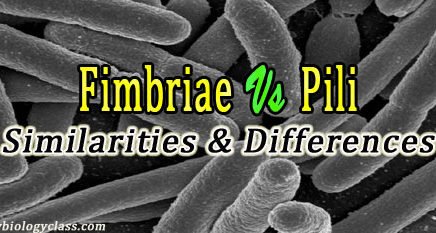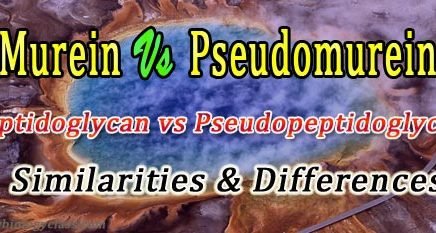
Difference between Pili and Fimbriae of Bacteria- A Comparison Table
Fimbriae vs Pili Difference between Pili and Fimbriae: Both Fimbria (plural Fimbriae) and Pilus (plural Pili) are the filamentous proteinaceous structures found on the surface […]

Fimbriae vs Pili Difference between Pili and Fimbriae: Both Fimbria (plural Fimbriae) and Pilus (plural Pili) are the filamentous proteinaceous structures found on the surface […]

Murein vs Pseudomurein The majority of Bacteria and Archaebacteria have a rigid cell wall around its plasma membrane. The peptidoglycan (also called murein) cell wall, […]

1. Penicillin-resistant bacteria produce β-lactamase which inactivates penicillin by: a. Esterifying the carboxyl group b. Oxidizing S atom c. Hydrolyzing the side chain d. Hydrolyzing […]

H.S.A. Natural Sciences Previous Question Papers Kerala Public Service Commission (K-PSC) (HSA Natural Science Exam 2006) Original question paper of Kerala PSC HSA (High School […]

H.S.A. Natural Sciences Previous Question Papers Kerala Public Service Commission (K-PSC) (HSA Natural Science Exam 2006) Original question paper of Kerala PSC HSA (High School […]

H.S.A. Natural Sciences Previous Question Papers Kerala Public Service Commission (K-PSC) (HSA Natural Science Exam 2006) Original question paper of Kerala PSC HSA (High School […]

H.S.A. Natural Sciences Previous Question Papers Kerala Public Service Commission (K-PSC) (HSA Natural Science Exam 2006) Original question paper of Kerala PSC HSA (High School […]

Kerala PSC Zoology Lecturer / Assistant Professor Recruitment Exam 2014 Question Paper (Q. Code 56/2014) Original solved question paper of Kerala PSC Zoology Lecturer/Assistant Professor […]

Kerala PSC Zoology Lecturer / Assistant Professor Recruitment Exam 2014 Question Paper (Q. Code 56/2014) Original solved question paper of Kerala PSC Zoology Lecturer/Assistant Professor […]